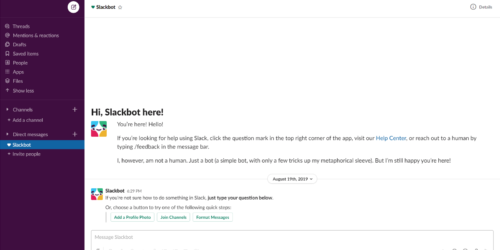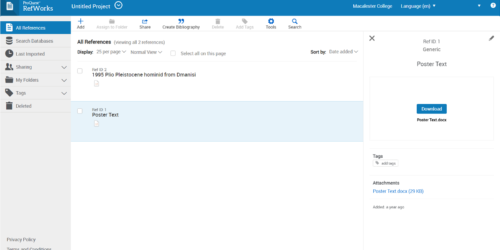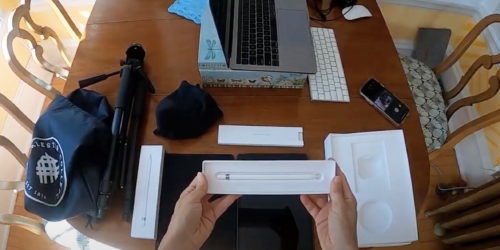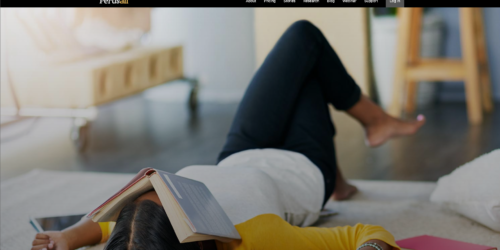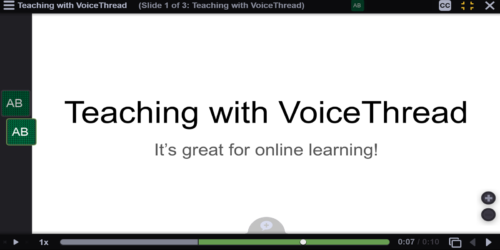Podcasting
I need to make a podcast…
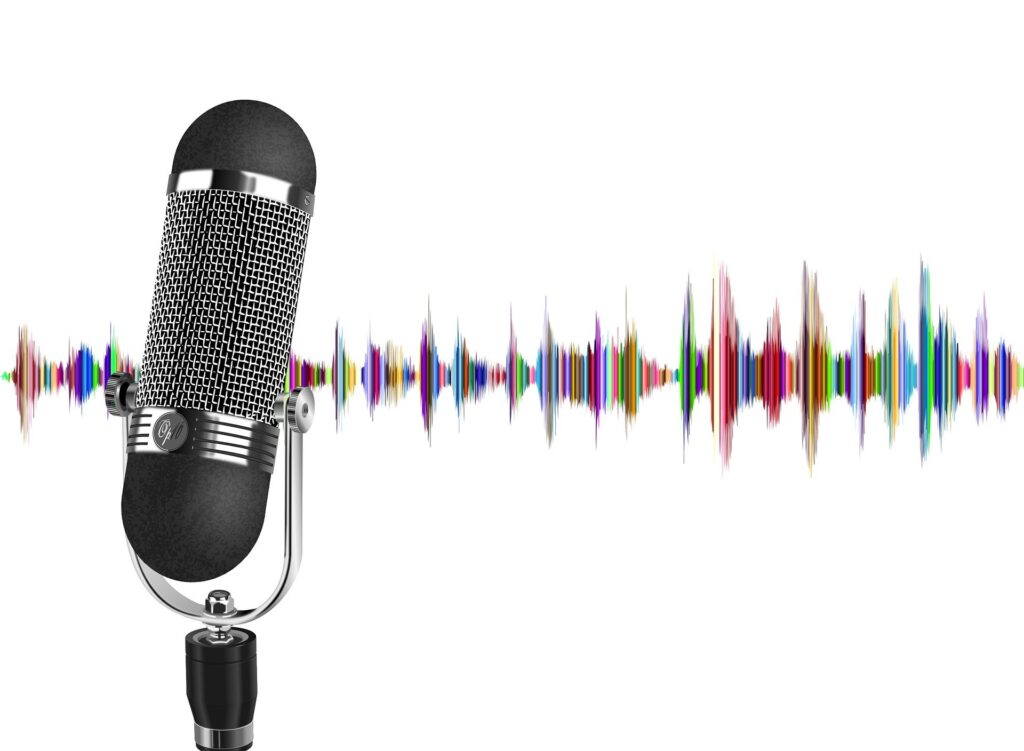
A podcast is a digitally recorded audio file that can be downloaded or streamed for listening. Podcast content is as varied as the hosts who produce them. They can be long or short, serious interviews or comedic parodies, groundbreaking research or fictional stories that last for 5 minutes or span several episodes.
As class assignments, podcasts are usually created by students or pairs of students on a general topic selected by the professor. Podcasting helps hone research and interview skills and integrates layered and nuanced storytelling.
You might use podcasts in a class to:
- Conduct scholarly research
- Learn and hone interview skills
- Synthesize research for a general audience
This process isn’t necessarily linear. Research is done while doing interviews. You may revisit and rewrite your scripts throughout the process. The editing process will change the language you use.
Below is a walkthrough of the process, along with tips, tricks, and references for creating podcasts.
Researching a podcast is a lot like researching a traditional research paper, but there are a couple things that give your podcast life.
Interviews
Depending on the goal of your podcast there are many different people you might interview.
- Expert in the field: a voice of authority to explain the topic and add references.
- People effected: Create a personal narrative of the human toll or benefit.
- Person on the street:Show a variety of opinions.
- Cohost: Fine a friend or partner to create a relaxed conversational back and forth.
The interviewer in this excerpt of This American Life, “Hit the Road,” is the subject of the story. However, the speaker painted such a colorful introduction, it became the first lines of this podcast.
Interview Questions – Do’s
- Ask open ended questions rather than yes/no questions.
- Bland questions evoke colorful responses; and colorful questions evoke bland responses.
- Ask questions that begin with why, how, and what.
- Why is that?
- What do you mean?
- How did that happen?
- How did you deal with that?
- How did that make you feel?
- Why is this so important to you?
- Ask questions that reveal details, examples, and anecdotes. “Tell me about a time when…” “What are some specific moments that will stick with you long after this is over?” “Is there a story that encapsulates what your experience has been like/the work that you do/etc.?”
If you’re not sure, ask again. Don’t be afraid to say, “I don’t understand,” or ”Tell me more about that.” Repeat back your understanding of something to make sure you’re getting it right.
Joe Linstroth, Director of Media Relations, Macalester College
Interview Questions – Don’ts
- Don’t make statements. Ask questions.
- Minimize questions that begin with: were, was, did, do, have you, are, should… (yes-or-no questions)
- Don’t interrupt and do resist the urge to fill the awkward silence
- Don’t ask long, rambling questions – get to the point
- Don’t ask either-or questions. EXAMPLE: Is democracy part of the problem or part of the solution or both? (What if it’s neither? What if they have a different way of describing the problem?)
- Don’t feel like you need to offer a reaction to everything they say. Just ask the next question. Or react with a follow-up question.
- Avoid double-barrelled questions. EXAMPLE: How bad is the problem and what can be done about it?
- Have a plan, write out a list of questions, but be ready to diverge. This requires that you LISTEN!
- It’s all in the details.
- Have them describe their experience as much as you can.
- Let the silence be. They’re thinking!
- The interview is not about you.
- Avoid editorializing, value judgements, assigning emotions (Ex. “You must have been frustrated…” Ask instead: “How did that make you feel?”)
Interview Tips
Be Clear About Your Intentions for the Podcast. When contacting a potential interviewee, be clear about the goals of the podcast. “I would like to interview you because….” Also, let them know the types of questions you will be asking. Make sure you are talking to the right person.
Send a Pre-Interview Email. Let them know how you will record your interview, who is the audience, how much of their time you need, and how they would like to be referred to (pronouns, title, level of formality).
Get Permission. Send them a Podcast Release Form, which gives you permission to share their interview with the public. Have it signed and returned before the interview.
Know, but ask questions like you don’t. Research your topic and your interviewee, but drill down for the basics in your questions. Your listeners probably don’t know. That’s why they are listening.
Expert or Storyteller? Are you looking for a soundbite from an expert in the field, or someone to bring humanity to your story? You might want no background noise for a statistical fact, but the sounds of the a person’s surroundings for a richer narrative in a story.
Minimize Distractions. Turn off alerts, close the door, put away the food, and have a pen and paper in place for notes.
Writing a Script
Getting Started
- Be focused. Know what you want to say.
- Make you point clear to listeners.
- Tell your audience what to expect (You’ll learn XX or discover what happens to this character/place/policy/etc.)
- After your opening statement dig into the story.
Grab your listeners attention
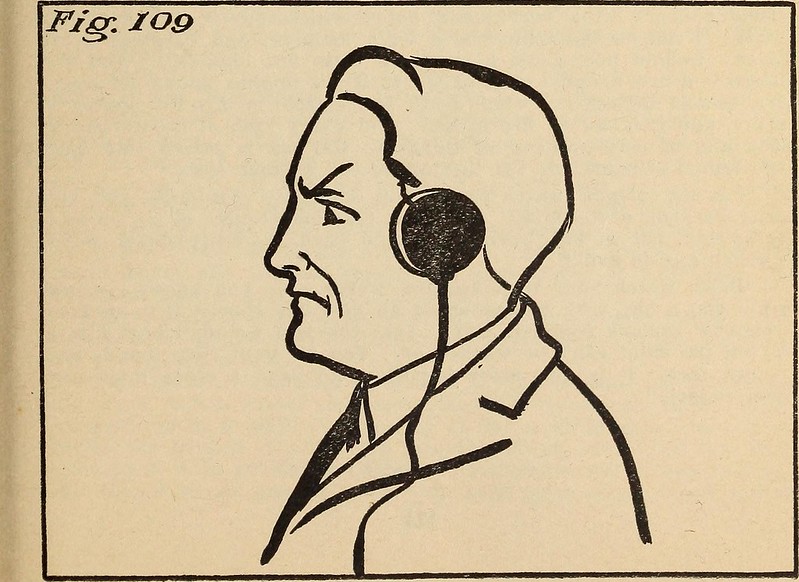
- Ask a question
- How are people effected?
- Was there an unsuspected result?
- Why are we doing things this way?
- Put the listener in the middle of the action
- Create a strong sense of place.
- Start with a person or sound.
- It’s a mystery!
- This weird thing happened and we’re going to find out why.
- Who did it?
- Make the story personal
- I’m investing this because of my experience.
Visit How Audio Stories Begin for more details.
Delivering your message
- Even a conversation style podcast should have a roadmap or outline.
- Don’t be afraid to repeat yourself or re-enforce a point.
- Be aware of the tone you are setting.
Everyone stumbles over their words. And when that happens here at NPR, we often go back to the script and write shorter sentences that are easier to read and won’t leave you feeling out of breathe.
Starting your Podcast: A guide for students, NPR
The soundtrack
Think about how music sets the tone. What kind of music will you want?
- Try a few different styles of music and see how that effects your story.
- What other kinds of sound might you want to capture if you interview someone where they work or live?
- Where else could you go to collect sounds that tell your story?
There are many copyright free resources to find music and ambient sounds to enhance your story.
Tools
Audacity
Audacity is an open-source, free audio recording and editing software, for both Mac and PC. Create and edit multiple tracks.
Audacity Anatomy
When you Save your project, Audacity creates an Aup3 project file. When you Export your project, Audacity can create finished audio files in a number of different formats (Mp3, Wave, Ogg, etc)
MP3s
Work great for an initial master recording and for exporting a final product, but won’t keep separate tracks. This is the type of file you will use to turn your completed project in to your instructor.

Importing Audio Into Audacity from your cellphone
Recording on your cellphone is an easy way to capture audio on the go. Newer phones do an excellent job of recording high quality audio especially when you are recording remotely. One thing to be aware of is that using the built-in audio recording app on your phone will create an .m4a rather than an .mp3 or .wav file. These .m4a files need a little help getting into Audacity. There are two easy ways to do this.
- Zamzar: Zamzar is free and no sign up is required. You can easily convert your files to .mp3, download, and import into Audacity.
- AnyConv: AnyConv is also free and easy to convert audio files from your phone into .mp3 files.
- Audacity Plug-in: If you intend to do a lot of recordings with your phone, you may want to add the .m4a converter to Audacity. Go to the Lame and FFmpeg libraries webpage.
- Windows: Scroll down to either TO DOWNLOAD Lame and FFmpeg for Windows, click links BELOW: and click on the download link.
- Audacity Plug-in: If you intend to do a lot of recordings with your phone, you may want to add the .m4a converter to Audacity. Go to the Lame and FFmpeg libraries webpage.
GarageBand
GarageBand is a free, Mac-only program. GarageBand comes with built-in sound effects libraries and audio loops. The interface is a bit more finished than Audacity, but the tools are essentially the same.
Equipment
Bluetooth Headphones
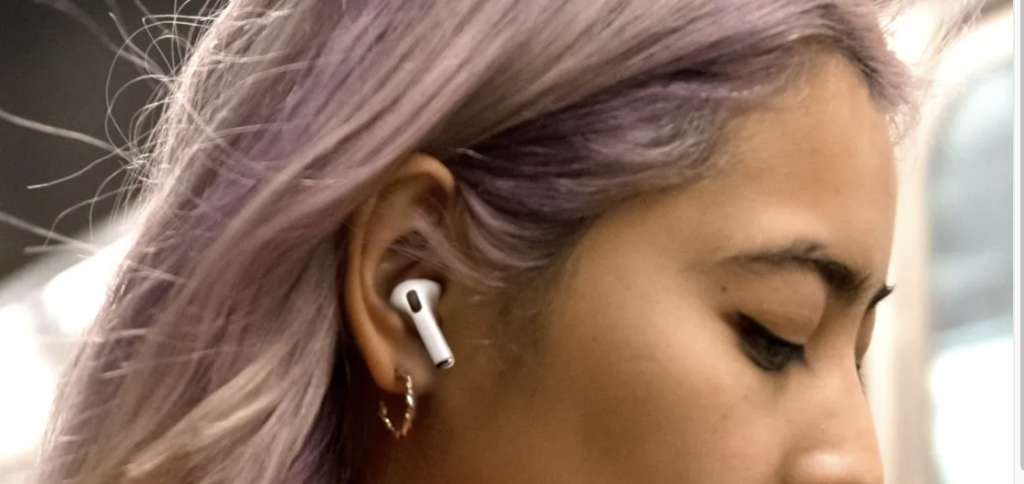
Want to use wireless headphones with Audacity?
- First, make sure they are connected to your computer via Bluetooth
- Open Audacity
- Select Transport > Rescan Audio Devices from the top menu bar
- Click on the pull-down menu next to the speaker icon in your Audacity interface
- Your paired headphones should now be listed
On Campus
Everything you need to get the highest quality recording possible is available for checkout in the Digital Resource Center. There are even, quiet Editing Suites set up for audio and video editing.
At Home
One of the great things about podcasting, is that you don’t need to have special equipment to make one. You can use the record feature on your phone or use the mp3 file from a Zoom recording.
Recording
Find a quiet place.
Even during the shutdown you can find recording space. It might be a good excuse to build a pillow fort studio. Be aware of ambient noise like cars and fans or activities in other rooms. Getting a good recording makes the rest easier.
Test your levels
Before you begin recording, do a test recording. Are you close enough to the microphone? Is the recording loud enough? Are there any weird noises you are picking up?
Collect ambient noise
- Record the ambient noise in the room for about a minute.
- Copy and paste this ambient clip to prevent clips from dramatically dropping off.
- Fade music in and out of transitions to mask changes.
Breathe
Take your time. Take a breath before you begin and in-between paragraphs. This gives you room to edit and makes sure you are not speaking too fast.
Make a copy of your master file.
You don’t want to delete something you will need later.
Save often!
Transcripts
Transcripts of audio interviews make it easier to edit you final product. Transcripts include timestamps which allow you to easily pull-out and locate key bits of information you know you will want to include in your final edit. Try these tools to help create transcripts of your interviews.
- Macalester has enabled Live Transcription for Zoom. This feature not only creates closed captions on the fly, it can also create a transcription of your Zoom conversation.
- Otter.ai will transcribe audio recordings and embed timestamps. Free accounts are available.
Share
- Check in with your faculty member about how to turn in the podcast
- Share with friends and family be sending them the final .mp3 file.
- Share it with the world
- Anchor.fm is Spotify’s free podcast hosting and creation tool
- Make a Google Site to showcase your work
Resources
Free Music & Sound Effects
- Creative Commons.
Creative Commons is a nonprofit organization dedicated to building a globally-accessible public commons of knowledge and culture. Learn about use, resources, and citations. - Blue Dot Sessions
Professionally recorded music, free to download with soundtracks in mind.
- BBC SoundEffects
The Sound Effects are BBC copyright, but they may be used for personal, educational or research purposes, as detailed in the license. No need to make an account for these free downloads.
- Freesound.org
Freesound aims to create a huge collaborative database of audio snippets, samples, recordings, bleeps, etc. released under Creative Commons licenses that allow their reuse.
- Free Music Archive
The Free Music Archive is an interactive library of high-quality, legal audio downloads directed by WFMU.
- Internet Archive
Internet Archive is a non-profit library of millions of free books, movies, software, music, websites, and more.
- Library of Congress
Resources have detailed copyright information associated with their records. Many historic speeches, songs, and other recordings are available for use.
Making a Great Podcast
- NPR Podcast Guide
An excellent guide that will lead you through creating a podcast, from getting your ideas together to production. - Transom
Transom provides tips and techniques on recording and podcasting. It also showcases stories, with “making of” commentary. - Medium
Interviews with podcasters talking about their process. Medium also works with Anchor, a free hosting service to help you publish your podcasts. - The Bello Collective
The Bello Collective is a newsletter & publication about audio storytelling and the podcast industry.
Academic Podcasting
- A Guide to Academic Podcasting
Stacey Copeland and Hannah McGregor
A guide from the Amplify Podcast Network, a collaborative project dedicated to reimagining the sound of scholarship.

